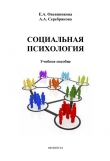
Текст книги "Социальное влияние"
Автор книги: Филип Зимбардо
Соавторы: Майкл Ляйппе
Жанр:
Психология
сообщить о нарушении
Текущая страница: 48 (всего у книги 51 страниц)
Измерение других компонентов систем установок
Во всех главах этой книги мы встречались со случаями, когда измеряется фактическое поведение, которое должно следовать из установок данного человека. В некоторых исследованиях процессов убеждения, например, экспериментатор может предоставить испытуемым возможность действовать в соответствии с новой установкой, появившейся у них в результате прослушивания убеждающего сообщения: подписать обращение, стать донором и сдать кровь, купить определенный продукт или прореагировать каким – либо иным способом, рекомендованным в убеждающем сообщении. В исследованиях получения согласия и когнитивного диссонанса рассматриваются такие поступки, как покупка лотерейных билетов, ложь в адрес другого испытуемого или откровенный отказ подчиниться групповому решению. Если наблюдение фактического поведения невозможно, то исследователи могут измерять поведенческие намерения, которые обычно коррелируют с будущим поведением, но эту корреляцию ни в коем случае нельзя считать идеальной (см. главы 1 и 5). Исследователь может попросить испытуемых оценить по числовой шкале вероятность того, что они совершат тот или иной поступок (например, приобретут продукт или бросят курить).
В последние годы социальные психологи проявляют все больший интерес к измерению когниций установочной системы. Одним из популярных методов, часто используемых в исследованиях процессов убеждения, является метод перечисления мыслей (Greenwald, 1968; Petty and Cacioppo, 1981). После того как испытуемые прослушали или прочитали убеждающее сообщение, их просят записать все свои мысли, имеющие к нему отношение. Им дают инструкцию разделить свои мысли на «отдельные идеи» и выдают бланки для ответов, где имеются графы для последовательной записи «идей», из которых состоят мысли. На выполнение задания отводится определенное время (часто это три минуты). Затем не менее двух судей оценивают и классифицируют эти мысли (судьям неизвестно, в какой экспериментальной группе находился каждый испытуемый). В зависимости от основной цели эксперимента мысли можно классифицировать по характеру их содержания: выражено ли в них согласие или несогласие с точкой зрения, высказанной в убеждающем сообщении; отражают ли они идеи, высказанные в сообщении, или собственные идеи испытуемого; касаются ли они самого сообщения или коммуникатора и так далее. Проанализировав мысли определенных типов, исследователь часто может узнать многое об убеждениях и знаниях, лежащих в основе установки, и о том, как предъявление убеждающего сообщения и другие манипуляции повлияли на эти ментальные переменные.
Существует также метод контент – анализа, который предназначен для анализа письменных сочинений, групповых дискуссий и других вербальных реакций, причем анализ производится по таким параметрам, как сложность мышления, оценочная последовательность мышления и знание предмета.
Для оценки концептуальных переменных, имеющих отношение к установкам, используются также измерения временных и физиологических показателей. Например, для изучения доступности и силы установок измеряется время, которое необходимо людям для того, чтобы сообщить о своем согласии или несогласии с краткими установочными высказываниями.
Измерение физиологических показателей, таких как частота сердцебиения и гальванические кожные реакции (связанные с потоотделением), уже давно используется при исследовании эмоций и аффективных компонентов установок. Проводя традиционные процедуры измерения физиологических показателей, можно достоверно зарегистрировать изменения интенсивности чувств и эмоций, но такие данные не позволяют судить о том, какие установки отражают эти эмоции – позитивные или негативные. Тем не менее не так давно исследователи начали изучать весьма специфические физиологические реакции на социальные стимулы и предполагают, что эти реакции могут отражать фактическую ориентацию установок человека по отношению к социальному стимулу, однако эта гипотеза требует дальнейшей проверки. Например, в исследованиях по одной тщательно разработанной программе получены данные наблюдений, которые говорят о том, что когда люди слушают и обдумывают убеждающее сообщение, у них происходят небольшие, но поддающиеся измерению изменения активности лицевых мускулов, находящихся вокруг рта (Cacioppo and Petty, 1987). Известно, что эти изменения имеют различный характер для случаев, когда реципиент возражает против доводов, приведенных в сообщении, и когда это сообщение вызывает когнитивные реакции согласия.
В целом можно сказать, что в работах, посвященных исследованию изменения установок и социального влияния, применяется множество самых разнообразных измерительных методик, причем некоторые подходы разработаны лучше, чем другие.
ЛИТЕРАТУРА
Abelson. R. P., and Prentice, D. A. (1989). Beliefs as possessions: A functional perspective. In A. R. Pratkanis, S. J. Breckler, and A. G. Green – wald (Eds.), Attitude structure and function (pp. 361–381). Hillsdale, NJ: Erlbaum.
Adler.R.P., Lesser, G.S., Meringofl, L. K., Robertson, T.S., and Ward.S. (1980). The effects of television advertising on children. Lexington, MA: D. С Heath.
Adorno, T. W., Frenkel – Brunswick, E., Levin – son., D.J., and Sanford,R.N. (1950). The authoritarian personality. New York: Harper.
Ajzen, I., and Fishbein, Af. (1980). Understanding attitudes and predicting social behavior. Englewood Cliffs, NJ: Prentice – Hall.
Allen, V.L.. and Wilder, D. A. (1980). Impact of group consensus and social support on stimulus meaning: Mediation of conformity by cognitive restructuring. Journal of Personality and Social Psychology, 39, 1116–1124.
Allport.G. W. (1954). The nature of prejudice. Cambridge, MA: Addison – Wesley.
Altheide, D. L., and Johnson, J. M. (1977). Counting souls: A study of counseling at evangelical crusades. Pacific Sociological Review, 20, 323–348.
Altman, D. G., Slater, M. D., Albright, C. L., and Maccoby, N. (1987). How an unhealthy product is sold: Cigarette advertising in magazines, 1960–1985. Journal of Communications, 37, 95–106.
Andersen, S. M., and Zimbardo, P. G. (1984). On resisting social influence. Cultic Studies Journal, 1, 196–219.
Anderson, С A., Lepper, M. R., and Ross. L. (1980). Perseverance of social theories: The role of explanation in the persistence of discredited information. Journal of Personality and Social Psychology, 39, 1037–1049.
Anderson, N. H., and Hubert, S. (1963). Effects of concomitant verbal recall on order effects in personality impression formation. Journal of Verbal Learning and Verbal Behavior, 1, 379–391.
Andrews, L. B. (1984). Exhibit A: Language. Psychology Today, Feb., 28–33.
Apple, W., Streeter, L.A., and Krauss.R.M. (1979). Effects of pitch and speech rate on personal attributions. Journal of Personality and Social Psychology, 37, 715–727.
Aronson, E. (1969). The theory of cognitive dissonance: A current perspective. In L. Berkowitz (Ed.), Advances in experimental social psychology (vol. 4, pp. 1–34). New York: Academic Press.
Aronson, E. (1991). How to change behavior. In R. С Curtis and G. Stricke (Eds.), How people change: Inside and outside therapy. New York: Plenum
Aronson, E., and Carlsmith, J. M. (1968). Experimentation in social psychology In G. Lindzey and E. Aronson (Eds.), The handbook of social psychology (2d ed., Vol. 2, pp. 1–79). Reading, MA: Addison – Wesley.
Aronson, E., Ellsworth, P. C., Carlsmith, J. Al, and Gonzales, Al H. (1990) Methods of research in social psychology (2d ed.). New York: McGraw – Hill
Asch, J., and Shore, В. М. (1975). Conservation behavior as the outcome of environmental education. Journal of Environmental Education, 6, 25–33.
Asch, S. E. (1951). Effects of group pressure upon the modification and distortion of judgements. In H. Guetzkow (Ed.), Groups, leadership, and men. Pittsburg, PA: Carnegie Press.
Asch, S. E. (1952). Social psychology. Englewood Cliffs, NJ: Prentice – Hall.
Atkin, С. К. (1979). Research evidence on mass mediated health communication campaigns. In D. Nimmo (Ed.), Communication yearbook 3. New Brunswick, NJ: Transaction Books.
Atkin. С. К. (1980). Effects of the mass media. New York: Holt, Rinehart & Winston.
Axsom, D. (1989). Cognitive dissonance and behavior change in psychotherapy. Journal of Experimental Social Psychology, 25, 234–252.
Axsom, D., Yates, S., and Chaiken, S. (1987). Audience response as a heuristic cue in persuasion. Journal of Personality and Social Psychology, 53, 30–40.
Bailey, F. L. (1985). To be atrial lawyer. New York: Wiley.
Baker, A. L., and Wilson, P. H. (1985). Cognitive – behavior therapy for depression: The effects of booster sessions on relapse. Behavior Therapy, 16,335–344.
Bales, R. F. (1958). Task roles and social roles in problem – solving groups. In E. E. Maccoby, T. M. Newcomb, and E. L. Hartley (Eds.), Readings in social psychology (3d ed., pp. 437–447). New York: Holt, Rinehart & Winston.
Bandura, A. (1965). Influence of models' reinforcement contingencies on the acquisition of imitative responses. Journal of Personality and Social Psychology, 1, 589–595.
Bandura, A. (1977). Social learning theory. Englewood Cliffs, NJ: Prentice – Hall.
Bandura, A. (1982). Self – efficacy mechanism in human agency. American Psychologist, 37, 122–147.
Bandura, A. (1986). Social foundations of thought and action: A social – cognitive theory. Englewood Cliffs, NJ: Prentice – Hall.
Bandura, A. (1990). Mechanisms of moral disengagement in terrorism. In W. Reich (Ed.), Origins of terrorism: Psychologies, ideologies, theologies, states of mind (pp. 161–191). New York: Cambridge University Press.
Bandura, A., Ross, D., and Ross, S. A. (1961). Transmission of aggression through imitation of aggressive models. Journal of Abnormal and Social Psychology, 63, 575–582.
Bandura, A., Ross, D., and Ross, S. A. (1963). Imitation of film – mediated aggressive models. Journal of Abnormal and Social Psychology, 66, 3–11.
Bargh, 1. A., and Pietromonaco, P. (1982). Automatic information processing and social perception: The influence of trait information presented outside of conscious awareness on impression formation. Journal of Personality and Social Psychology, 43, 437–449.
Barker, E. (1984). The making of a Moonie: Choice or brainwashing. Oxford, England: Basil Black – well.
Baron, R. A., and Byrne, D. (1981). Social psychology: Understanding human interaction (3d ed.). Boston, MA: Allyn & Bacon.
Barthe, D. C, and Hammen, С L. (1981). The attri – butional model of depression: A naturalistic extension. Personality and Social Psychology Bulletin, 7, 53–58.
Basow, S. A. (1986). Gender stereotypes: Traditions and alternatives (2d ed.). Belmont, CA: Brooks/ Cole.
Batson, C. D. (1975). Rational processing or rationalization? The effect of disconfirming information on a stated religious belief. Journal of Personality and Social Psychology, 32, 176–184.
Batson, CD., Cochran, P. J., Biederman, M. F., Blosser, J. L„Ryan, M. J., and Vogt, B. (1978). Failure to help when in a hurry: Callousness or conflict? Personality and Social Psychology Bulletin, 4, 97–101.
Baumeister, R. F. (1982). A self – presentational view of social phenomena. Psychological Bulletin, 91, 3–26.
Baumeister, R. F., and Tice, D. M. (1984). Role of self – presentation and choice in cognitive dissonance under forced compliance: Necessary or sufficient causes? Journal of Personality and Social Psychology, 46, 5–13.
Baumrind, D. (1964). Some thoughts on the ethics of research after reading Milgram's Behavioral Study of Obedience. American Psychologist, 19, 421–423.
Baumrind, D. (1985). Research using intentional deception: Ethical issues revisited. American Psychologist, 40, 165–174.
Beaman, A. L., Cole, С M., Preston, M., Klentz, В., and Steblay, N. M. (1983). Fifteen years of foot – in – the – door research: A meta – analysis. Personality and Social Psychology Bulletin, 9, 181–196.
Beck, A. T. (1976). Cognitive therapy and emotional disorders. New York: International Universities Press.
Becker, L. В., McCombs, M. E., and McLeod, J. M. (1975). The development of political cognitions. In S. H. Chaffee (Ed.), Political communication: Issues and strategies for research (pp. 21–63). Beverly Hills, CA: Sage.
Bedau, H., and Radelet, M. (1987). Miscarriages of justice in potentially capital cases. Stanford Law Review, 40, 21–179.
Beebe, S. A. (1974). Eye contact: A nonverbal determinant of speaker credibility. The Speech Teacher, 23, 21–25.
Bell, В. Е., and Loftus, E.F. (1989). Trivial persuasion in the courtroom: The power of (a few) minor details. Journal of Personality and Social Psychology, 56, 669–679.
Belloc, N. В., and Brestow, L. (1972). Relationship of physical health status and family practice. Preventive Medicine, 1,409–421.
Bern, D.J. (1972). Self – perception theory. In L. Berkowitz (Ed.), Advances in experimental social psychology (vol. 6, pp. 1–62). New York: Academic Press.
Bern, D.]., and McConnell, H. K. (1970). Testing the self – perception explanation of dissonance phenomena: On the salience of premanipulation attitudes. Journal of Personality and Social Psychology, 14, 23–31.
Bettinghaus, E. P. (1980). Persuasive communication (3d ed.). New York: Holt, Rinehart & Winston.
Blum, A. (1989). The targeting of minority groups by the tobacco industry. In L. A. Jones (Ed.), Minorities and cancer (pp. 153–162). New York: Springer – Verlag.
Bornstein, R. F., Leone, D. R., and Galley, D. J. (1987). The generalizability of subliminal mere exposure effects: Influence of stimuli perceived without awareness on social behavior. Journal of Personality and Social Psychology, 53, 1070–1079.
Bowers, K. S. (1984). On being unconsciously influenced and informed. In K. S. Bowers and D. Meichenbaum (Eds.), The unconscious reconsidered. New York: Wiley. Brehm, J. W. (1972). Responses to loss of freedom: A theory of psychological reactance Morris – town, NJ: General Learning Press.
Brehm, S. S„and Smith, T. W. (1986). Social psychological approaches to psychotherapy and behavior change. In S. L. Garfield, and A. E. Be – rgin (Eds.), Handbook of psychotherapy and behavior change (3d ed., pp. 69–115). New York: Wiley.
Brickman.P., Redfield, J'., Harrison, A. A., and Crandell, R. (1972). Drive and predisposition as factors in the attitudinal effects of mere exposure. Journal of Experimental Social Psychology, 8, 31–44.
BrighamJ. С. (1971). Ethnic stereotypes. Psychological Bulletin, 76, 15–33.
BrighamJ. C, and Bothwell, R. K. (1983). The ability of prospective jurors to estimate the accuracy of eyewitness identifications. Law and Human Behavior, 7, 19–30.
Broadbent, D. E. (1958). Perception and communication. London: Pergamon Press.
Broadbent, D. E. (1971). Decision and stress. New York: Academic Press.
Brock, Т. С (1965). Communicator – recipient similarity and decision change. Journal of Personality and Social Psychology, 1, 650–654.
Brown, R. (1974). Further comments on the risky shift. American Psychologist, 29. 468–470.
Brown, R. (1986). Social psychology: The second edition. New York: Free Press.
Bryan J. H., and Test, N.A. (1967). Models and helping: Naturalistic studies in aiding behavior. Journal of Personality and Social Psychology, 6, 400–407.
Buckhout, R. (1974). Eyewitness testimony. Scientific American, 231, 23–31.
Burger J. (1986). Increasing compliance by improving the deal: The that's – not – all technique. Journal of Personality and Social Psychology, 51, 277–283.
BurgoonJ.K., Pfau.M., Parrott.R., Birk, Т., Coker.R., and Burgoon M. (1987). Relational communication, satisfaction, compliance – gaining strategies, and compliance in communication between physicians and patients. Communication Monographs, 54, 307–324.
Burnstein, E., and Vinokur, A. (1973). Testing two classes of theories about group induced shifts in individual choice. Journal of Experimental Social Psychology, 9, 123–137.
Byrne, D. (1971). The attraction paradigm. New York: Academic Press.
Cacioppo,]. Т., and Petty, R. E. (1979). Effects of message repetition and position on cognitive response, recall, and persuasion. Journal of Personality and Social Psychology, 37, 97–109.
Cacioppo, J. Т., and Petty, R. E. (1980). Sex differences in influenceability: Toward specifying the underlying processes. Personality and Social Psychology Bulletin, 6, 651–656.
Cacioppo, J. Т., and Petty, R. E. (1982). The need for cognition. Journal of Personality and Social Psychology, 42, 116–131.
Cacioppo, J. Т., and Petty, R. E. (1987). Stalking rudimentary processes of social influence: A psychophysiological approach. In M. P. Zanna, J. M. Olson, and С. Р. Herman (Eds.), Social influence: The Ontario Symposium (vol. 5, pp. 41–74). Hillsdale, NJ: Erlbaum.
Cacioppo, J J., Petty, R.E., and Sidera J.A. (1982). The effects of a salient self – schema on the evaluation of proattitudenal editorials: Top – down versus bottom – up message processing. Journal of Experimental Social Psychology, 18, 324–338.
Colder, B.J. Jnsko, C.A.,andYandell,B.(1974). The relation of cognitive and memorial processes to persuasion in a simulated jury trial. Journal of Applied Social Psychology, 4, 62–93.
Campbell, D. Т., and Fiske, D. W. (1959). Convergent and discriminant validation by the multitraitmultimethod matrix. Psychological Bulletin, 56, 81–105.
Campbell, D. Т., and Stanley, J. C. (1966). Experimental and quasi – experimental designs for research. Chicago: Rand McNally.
Campbell, J. D., Tesser, A., and Fairey, P. J. (1986). Conformity and attention to the stimulus: Temporal and contextual dynamics. Journal of Personality and Social Psychology, 51, 315–324.
Caplan, R. D., Robinson, E. A. R., French, J. R. P., Caldwell, J. R., and Shinn, M. (1976). Adhering to medical regimens: Pilot experiments in patient education and social support. Ann Arbor, MI: Institute for Social Research, University of Michigan.
Chaiken, S. (1979). Communicator physical attractiveness and persuasion. Journal of Personality and Social Psychology, 37, 1387–1397.
Chaiken, S. (1980). Heuristic versus systematic information processing and the use of source versus message cues in persuasion. Journal of Personality and Social Psychology, 39, 752–766.
Chaiken, S. (1987). The heuristic model of persuasion. In M. P. Zanna, J. M. Olson, and С. Р. Herman (Eds.), Social influence: The Ontario symposium (vol. 5, pp. 3–39). Hillsdale, NJ: Erlbaum.
Chaiken, S., Liberman.A., and Eagly, A. H. (1989). Heuristic and systematic information processing within and beyond the persuasion context. In J. S. Uleman and J. A. Bargh (Eds.), Unintended thought: Limits of awareness, intention, and control. New York: Guilford.
Chaiken, S., and Baldwin, M. W. (1981). Affective – cognitive consistency and the effect of salient behavioral information on the self – perception of attitudes. Journal of Personality and Social Psychology, 41, 1–12.
Chaiken, S., and Eagly, A. H. (1976). Communication modality as a determinant of message persuasiveness and message comprehensibility. Journal of Personality and Social Psychology, 34,605–614.
Chaiken, S., and Eagly, A. H. (1983). Communication modality as a determinant of persuasion: The role of communicator salience. Journal of Personality and Social Psychology, 45, 241–256.
Charen, M. (1990). Say no way: Time for good old sell – control. San Francisco Examiner, Chronicle, This World Section, p. 3.
Christiaansen, R. E., Sweeney, J. D., and Ochalek, K. (1983). Influencing eyewitness descriptions. Law and Human Behavior, 7, 59–65.
Church, G. J. (1989). The other arms race. Time, Feb. 6, 20–26.
Cialdini, R. B. (1987). Compliance principles of compliance professionals: Psychologists of necessity. In M. P. Zanna, J. M. Olson, and C. P. Herman (Eds.), Social influence: The Ontariosymposium (vol. 5, pp. 165–184). Hillsdale, NJ: Erlbaum.
Cialdini, R. B. (1988). Influence: Science and practice (2d ed.). Glenview, 1L: Scott, Foresman.
Cialdini, R. В., Cacioppo, J. Т., Bassett, R., and Miller, J. A. (1978). Low – ball procedure for producing compliance: Commitment then cost. Journal of Personality and Social Psychology, 36, 463–476.
Cialdini, R. В., and Petty, R. E. (1981). Anticipatory opinion effects. In R. E. Petty, Т. М. Ost – rom, and Т. С Brock (Eds.), Cognitive responses in persuasion. Hillsdale, NJ: Erlbaum.
Cialdini, R. В., Reno, R. R., and Kallgren, С. А. (1990). A focus theory of normative conduct: Recycling the concept of norms to reduce littering in public places. Journal of Personality and Social Psychology, 58, 1015–1026.
Clancey,M., and Robinson, M. J. (1985). General election coverage: Part I. Public Opinion, 7, 49–54, 59.
Cohen, R. E., and Syme, S. L. (Eds.) (1985). Social support and health. Orlando, FL: Academic Press.
Comstock, G., Chaffee, S., Katzman, N.. McCoombs, M., and Roberts, D. (1978). Television and human behavior. New York: Columbia University Press.
Cooper, J. (1980). Reducing fears and increasing assertiveness: The role of dissonance reduction. Journal of Experimental Social Psychology, 16, 199–213.
Cooper, J., and Fazio, R. H. (1984). A new look at dissonance theory. In L. Berkowitz (Ed.), Advances in experimental social psychology (vol. 17, pp. 229–266). New York: Academic Press.
Cooper, J.. Zanna, M. P., and Taves.P.A. (1978). Arousal as a necessary condition for attitude change following induced compliance. Journal of Personality and Social Psychology, 36, 1101–1106.
Crocker, J. (1981). Judgment of covariation by social perceivers. Psychological Bulletin, 90, 272–292.
Darley, J'. Af.,and Batson, С D. (1973). From Jerusalem to Jericho: A study of situational and dispositional variables in helping behavior. Journal of Personality and Social Psychology 27, 100–108.
Davis, 1. H. (1980). Group decision and procedural justice. In M. Fishbein (Ed.), Progress in social psychology. Hillsdale, NJ: Erlbaum.
Davis, J. H„Holt, R. W„Spitzer, С. Е., and Stasser, G. (1981). The effects of consensus requirements and multiple decisions on mock juror verdict preferences. Journal of Experimental Social Psychology, 17, 1–15.
Davis, R. M, (1987). Current trends in cigarette advertising. The New England Journal of Medicine, 316, 725–732.
DeBono, K.G. (1987). Investigating the social – adjustive and value – expressive functions of attitudes: Implications for persuasion processes. Journal of Personality and Social Psychology, 52, 279–287.
Deci, E. L., and Ryan, R. M. (1985). Intrinsic motivation and self – determination in human behavior. New York: Plenum.
Deffenbacher, K. (1980). Eyewitness accuracy and confidence: Can we infer anything about their relationship? Law and Human Behavior, 4, 243–260.
Deutsch, M., and Gerard, H. B. (1955). A study of normative and informational social influences upon individual judgment. Journal of Abnormal and Social Psychology, 51, 629–636.
DeVos.G, and Wagatsuma, H. (1966). Japan's invisible race. Berkeley: University of California Press.
Devine.P. G. (1989). Stereotypes and prejudice: Their automatic and controlled components. Journal of Personality and Social Psychology, 56,5–18..
DiMatteo, M. R., and Taranta, A. (1979). Nonverbal communication and physician – patient rapport: An empirical study. Professional Psychology 10, 540–547.
DiMatteo, R. M., Hays, R. D., and Prince, L. M. (1986). Relationship of physicians' nonverbal communication skill to patient satisfaction, appointment noncompliance, and physician workload. Health Psychology, 5, 581–594.
DiMatteo, R. M., Taranta, A., Friedman, H. S., and Prince, L. M. (1980). Predicting patient satisfaction from physicians' nonverbal communication skills. Medical Care, 18, 376–387.
DiNicola, D.D., and DiMatteo, R. M. (1984). Practitioners, patients, and compliance with medical regimens: A social psychological perspective. In A. Baum, S.E.Taylor, and J. E. Singer (Eds.), Handbook of psychology and health (vol. 4, pp. 55–84). Hillsdale, NJ: Erlbaum.
Dixon, N.F. (1971). Subliminal perception: The nature of a controversy. London: McGraw – Hill.
Dolecek, T. A., Schoenberger, J. A., Omam, J. K., Kremer, B. K., Sunseri, A. J., and Alberti, J. M. (1986). Cardiovascular risk factor knowledge and beliefs in prevention among adults in Chicago. American Journal of Preventive Medicine, 2, 262–267.
Dovidio, J. F., and Ellyson, S. L. (1982). Decoding visual dominance behavior: Attributions of power based on the relative percentages of looking while speaking and looking while listening. Social Psychology Quarterly, 45, 106–113.
Dovidio, J. F.. Ellyson, S. L., Keating, C. F'., Heltman. K., and Brown, С. Е. (1988a). The relationship of social power to visual displays of dominance between men and women. Journal of Personality and Social Psychology, 54, 233–242.
Dovidio, J. F., Brown, С E., Heltman, K., Ellyson, S. L.. and Keating, С. F. (1988b). Power displays between women and men in discussions of gender – linked tasks: A multichannel study. Journal of Personality and Social Psychology, 55, 580–587.
Eagly, A. H. (1974). Comprehensibility of persuasive arguments as a determinant of opinion change. Journal of Personality and Social Psychology, 29, 758–773.
Ebbesen, E. В., and Konecni, V. J. (1982). Social psychology and the law: A decision – making approach to the criminal justice system. In V. J. Konecni and E. B. Ebbesen (Eds.), The criminal justice system: A social – psychological analysis. San Francisco: W. H. Freeman.
Edwards, K. (1990). The interplay of affect and cognition in attitude formation and change. Journal of Personality and Social Psychology, 59,202–216.
Ekman, P. (1985). Telling lies: Clues to deceit in the marketplace, politics, and marriage. New York: Norton.
Ekman, P., and Friesen, W. V. (1969). Nonverbal leakage and clues to deception. Psychiatry, 32, 88–106.
Ekman, P.. and Friesen. W. V. (1971). Constants across cultures in the face and emotion. Journal of Personality and Social Psychology, 17, 124–129.
Ekman. P., and Friesen, W. V. (1986). A new pan – cultural facial expression of emotion. Motivation and Emotion, 10, 159–168.
Ekman, P., Friesen, W. V., and O'Sullivan, M. (1988). Smiles when lying. Journal of Personality and Social Psychology, 54, 414–420.
Elkin.R.A. (1986). Self – presentation and attitude assessment effects on cognitive processes following attitude – discrepant behavior. Unpublished doctoral dissertation, Adelphi University.
Elkin.R.A., and Leippe, M.R. (1986). Physiological arousal, dissonance, and attitude change: Evidence for a dissonance – arousal link and a «don't remind me» effect. Journal of Personality and Social Psychology, 51, 55–65.
Etlickson.P.L., and Bell, R.M. (1990). Drug prevention in junior high: A multi – site longitudinal test. Science, 247, 1299–1305.
Ellison, K. W., and Buckhout, R. (1981). Psychology and criminal justice. Cambridge, MA: Harper & Row.
Erdley, С.A., and D'Agostino, P. R. (1988). Cognitive and affective components of automatic priming effects. Journal of Personality and Social Psychology, 54, 741–747.
Erickson, В… Lind,E.A., Johnson, В. С. and O'Barr, W.M. (1978). Speech style and impression formation in a court setting: The effects of «powerful» and «powerless» speech. Journal of Experimental Social Psychology, 14, 266–279.
Eron. L. D. (1980). Prescription for the reduction of aggression. American Psychologist, 35, 244–252.
Evans, R. I. (1984). A social inoculation strategy to deter smoking in adolescents. In J. D. Mataraz – zo, S. M. Weiss, J. A. Herd, N. E. Miller, and S. M. Weiss (Eds.), Behavioral health: A handbook of health enhancement and disease prevention. New York: Wiley.
Evans, R. I., Rozelle, R. M., Maxwell, S. E., Raines, B. E., Dill, C. A., Guthrie, T. /., Henderson, A. H.. and Hill, P. С. (1981). Social modeling films to deter smoking in adolescents: Results of a three – year field investigation. Journal of Applied Psychology, 66, 399–414.
Everett. P. В., Hayward, 5. C, and Meyers, A. W. (1974). The effects of a token reinforcement procedure on bus ridership. Journal of Applied Behavior Analysis, 7, 1–9.
Exline, R. V., Ellyson, S. L., and Long. B. (1975). Visual behavior as an aspect of power role relationships. In P. Pliner, L. Krames, and T. Alloway (Eds.), Nonverbal communication of aggression (pp. 21–52). New York: Plenum.
Falbo. Т… and Peplau, L. A. (1980). Power strategies in intimate relationships. Journal of Personality and Social Psychology, 38, 618–628.
Farquhar, J. W., Maccoby, N.. and Solomon, D. S. (1984). Community applications of behavioral medicine. In W. D. Gentry (Ed.), Handbook of behavioral medicine (pp. 437–478). New York: Guilford.
Fazio, R. И. (1979). Motives for social comparison: The construction – validation distinction. Journal of Personality and Social Psychology, 37,1683–1698.
Fazio, R.H. (1987). Self – perception theory: A current perspective. In M. P. Zanna, J. M. Olson, and C. P. Herman (Eds.), Social influence: The Ontario symposium (vol. 5, pp. 129–150). Hillsdale, NJ: Erlbaum.
Fazio, R. H. (1990). Multiple processes by which attitudes guide behavior: The MODE model as an integrative framework. In M. P. Zanna (Ed.), Advances in experimental social psychology (vol. 23, pp. 75–109). New York: Academic Press.
Fazio, R. H., Sanbonmatsu, D. M., Powell, M. C, and Kardes, F. R. (1986). On the automatic activation of attitudes. Journal of Personality and Social Psychology, 50, 229–238.
Fazio, R.H., and Zanna, M. P. (1981). Direct experience and attitude – behavior consistency. In L. Berkowitz (Ed.), Advances in experimental social psychology (vol. 14, pp. 162–202). New York: Academic Press.
Fazio, R. H., Zanna, M. P., and Cooper, J. (1977). Dissonance and self – perception: An integrative view of each theory's proper domain of application. Journal of Experimental Social Psychology, 13, 464–479.
Fehrenbach, P. A., Miller, D. J., and Thelen, M. H. (1979). The importance of consistency of modeling behavior upon imitation: A comparison of single and multiple models. Journal of Personality and Social Psychology, 37, 1412–1417.
Ferguson, T. /«and Wells, G. L. (1980). Primingof mediators in causal attribution. Journal of Personality and Social Psychology, 38, 461–470.








